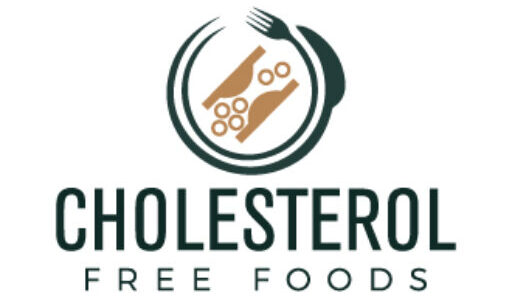7 Foods To Lower High Cholesterol
No single food has all of the above properties in large quantities; it is simply the key to lowering cholesterol, but there are a variety of foods that have some of the above properties and should therefore be consumed regularly.
The most common prevention recommendation is to increase exercise practice on a regular basis, with moderate-intensity aerobic exercise such as swimming and running 3-5 times a week.
In addition, experts place special emphasis on the type of diet. In fact, the Heart Foundation states, “An inappropriate diet is a major contributor to high cholesterol. And many people need to eat a diet high in animal fat, saturated fat, and alcohol because of their fast-paced lives.”
The first action people with high cholesterol levels should take is to make lifestyle changes, starting with their diet. All experts recommend a Mediterranean-style diet.
Essential Foods
According to the Heart Foundation, you should eat five servings of fruits and vegetables each day, including vegetables in your diet, and choose whole grains for products such as bread, pasta, and rice. In addition, you should eat beans and fatty fish such as tuna, sardines, anchovies, and salmon at least three times a week. Dried fruits such as almonds, nuts, and virgin olive oil are also good foods.
Why are these foods so important? According to experts, they provide monounsaturated fatty acids (found in virgin olive oil), omega-3 fatty acids (fatty fish), plant sterols/sterols (found in vegetable oils and dairy products), and antioxidants (such as fruits and vegetables) that lower blood cholesterol levels and increase HDL (good) cholesterol. This is a great way to get your diet in order.
Foods To Avoid
The most common foods to avoid are those with high-fat content in their composition. For example, if you have high cholesterol, you should eat skim whole milk, margarine with olive oil, skinless chicken or rabbit.
Commercial pancakes, industrial pastries, sausages, and egg yolks are foods that are prohibited in the diet. Finally, when preparing meals, it is best to bake, broil, grill, bake, or steam.
Cholesterol is a substance in the body that plays a regulatory role in functions such as the formation of bile acids and certain hormones. Hypercholesterolemia, a risk factor for certain heart diseases, occurs when there is a need for it, but its presence in the blood exceeds levels that are considered normal.
Experts say that this disease can be prevented by leading a healthy lifestyle, including exercise and a balanced diet, such as the Mediterranean diet.
Experts further stress that foods must be rich in polyunsaturated fatty acids, as these substances lower cholesterol levels, and must contain sterols and sterols, plant compounds that prevent the absorption of cholesterol in the intestines.” Finally, they must contain anthocyanins, which promote the production of cholesterol in the body,” he added.
Although foods with all of these characteristics are not present in large quantities and cannot be the key to lowering cholesterol on their own, they should be consumed regularly because they have some of the characteristics listed above. Here are 7 foods to lower high Cholesterol:
1) Avocado
Nine clinical studies have confirmed that including avocados in the diet of patients with hypercholesterolemia, in particular, can help reduce cholesterol levels by 9% to 45%, as well as LDL cholesterol.
2) Whole grains.
Whole grains also help regulate cholesterol. In fact, several studies have shown that consumption of whole grains is associated with lower cholesterol levels. So, what are the best grains to eat? Experts recommend oats, as they are the most effective, lowering LDL cholesterol after just 6 weeks of eating them.
3) Walnuts.
“It’s very interesting that a plant-based food with a high percentage of fat has the same ability to regulate cholesterol as nuts.” Dr. Hoffman said.
“On the other hand, these tasty nuts lowered LDL levels by 4% while increasing HDL cholesterol by 7% after four weeks of eating them.
4) Beans.
Lentils are another rich source of fiber that helps with the absorption of LDL cholesterol. Lentils not only lower LDL, but also increase HDL, which is good for heart health.
Other legumes, such as peas, can lower cholesterol by 5% and LDL by 8%. However, soy is the legume that lowers cholesterol the most.
Experts explain that it is generally recommended to eat at least 11 to 50 grams of legumes, such as soybeans, peas and lentils (which provide 60 percent of the recommended daily fiber intake), about three times a week.
5) Vegetables.
Green leafy vegetables, such as spinach, are believed to help lower cholesterol levels because they help eliminate cholesterol through the stool, especially if you eat a high-fat diet.
On the other hand, these vegetables also contain high levels of sterols and sterols, which also reduce the absorption of cholesterol in the intestines. Other vegetables, such as broccoli, also contain high amounts of fiber, which is very beneficial, especially in the fight against high cholesterol.
6) Natural HMG-CoA inhibitors
“The production of cholesterol in our body depends on the activity of an enzyme called HMG-CoA. Very rich in long-chain polyunsaturated fatty acids, also known as omega-3s, have the ability to inhibit this enzyme and help lower the production of cholesterol,” explains the expert of the food.
7) Foods rich in anthocyanins
Some plant-based products, such as fruits and vegetables, contain high concentrations of pigments called anthocyanins that give them a color ranging from red to orange to blue to purple.








